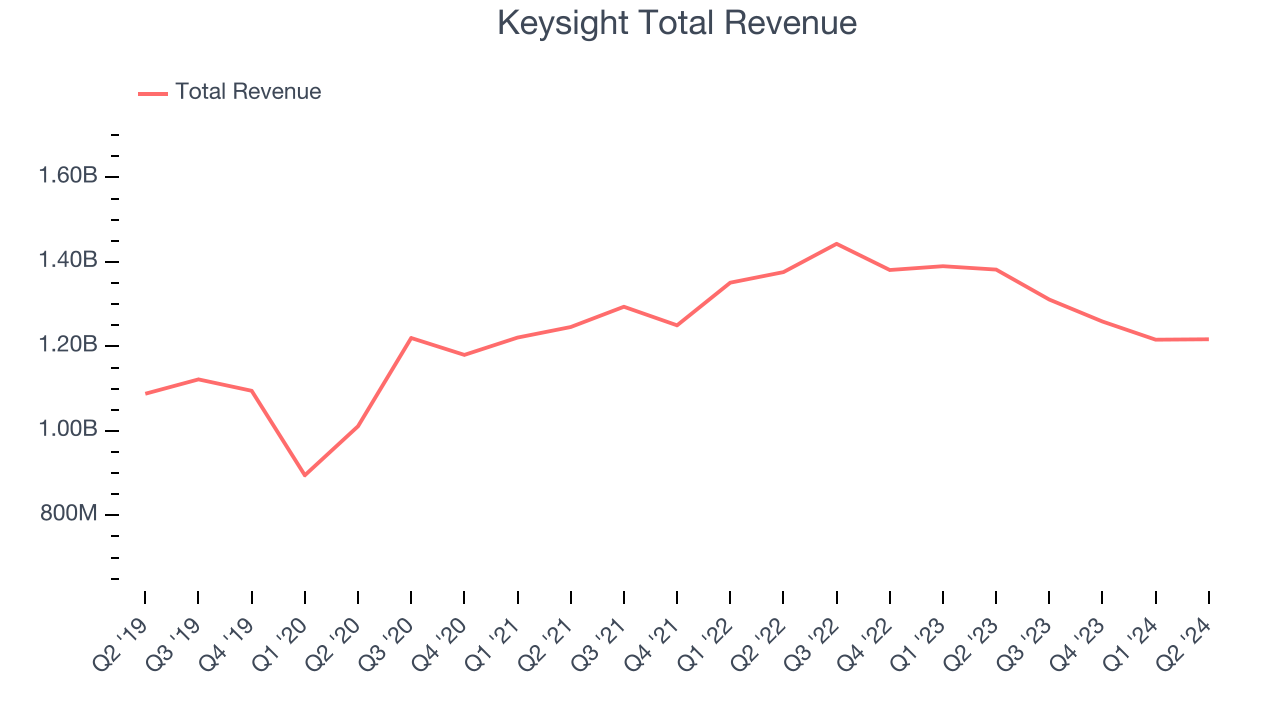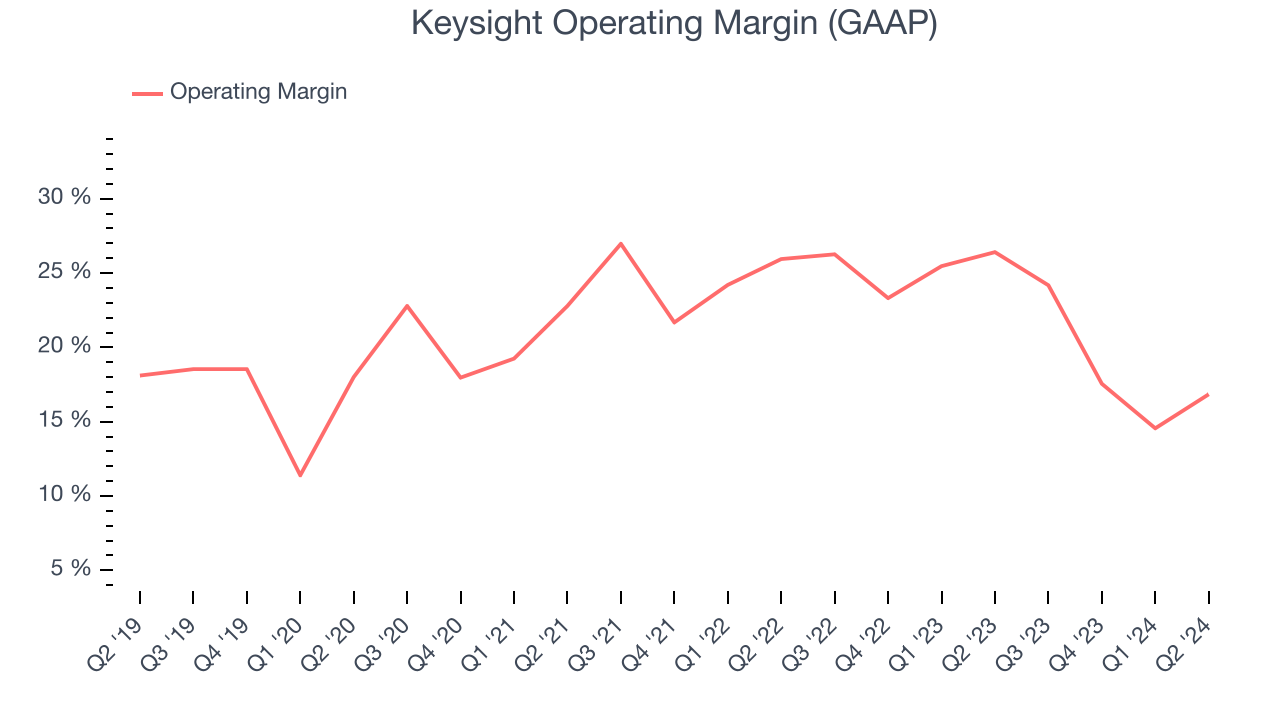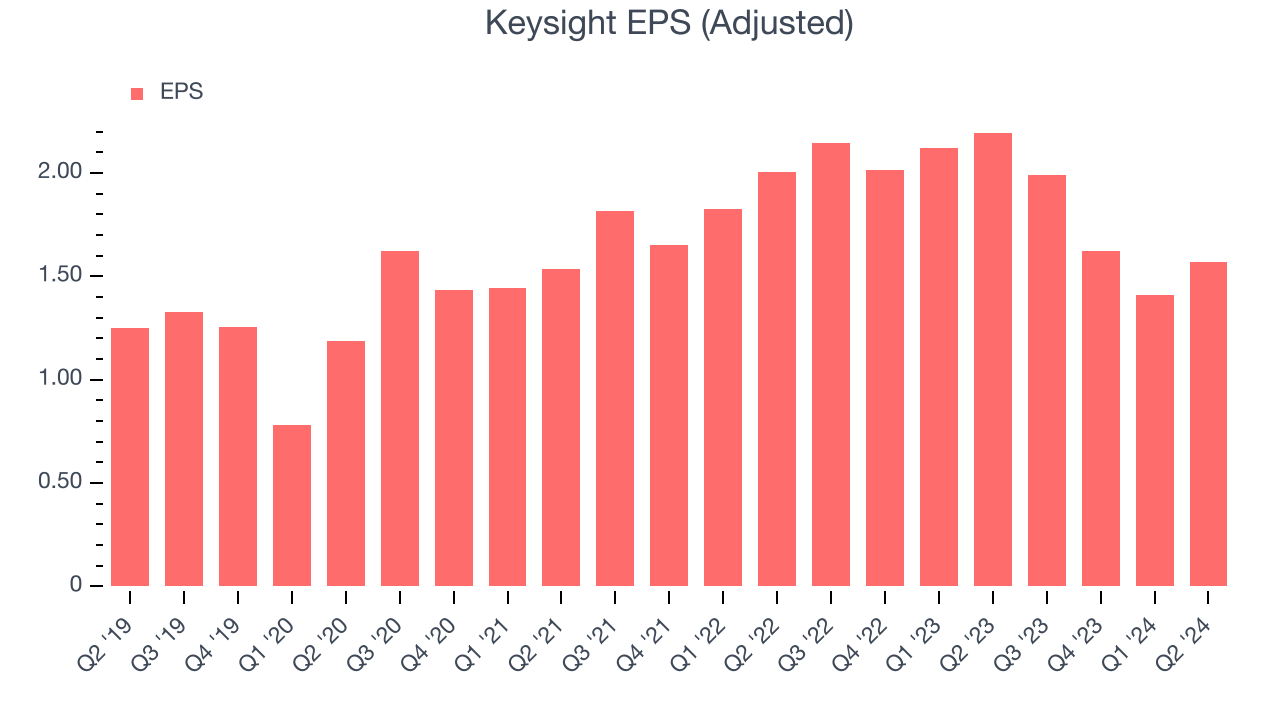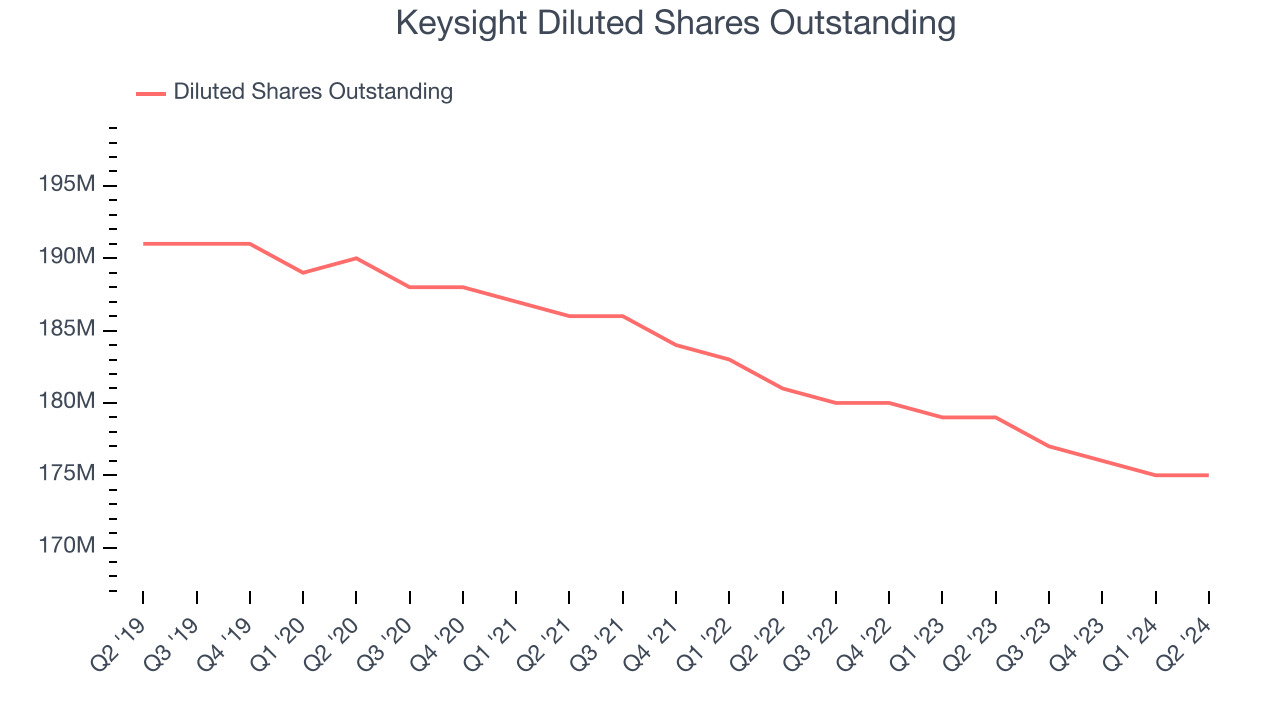Electronic measurement provider Keysight (NYSE:KEYS) reported results ahead of analysts’ expectations in Q2 CY2024, with revenue down 11.9% year on year to $1.22 billion. The company expects next quarter’s revenue to be around $1.26 billion, in line with analysts’ estimates. It made a non-GAAP profit of $1.57 per share, down from its profit of $2.20 per share in the same quarter last year.
Is now the time to buy Keysight? Find out by accessing our full research report, it’s free.
Keysight (KEYS) Q2 CY2024 Highlights:
- Revenue: $1.22 billion vs analyst estimates of $1.19 billion (1.9% beat)
- EPS (non-GAAP): $1.57 vs analyst estimates of $1.35 (16.6% beat)
- Revenue Guidance for Q3 CY2024 is $1.26 billion at the midpoint, roughly in line with what analysts were expecting
- EPS (non-GAAP) guidance for Q3 CY2024 is $1.56 at the midpoint, above analyst estimates of $1.54
- Gross Margin (GAAP): 62%, down from 64.8% in the same quarter last year
- Free Cash Flow Margin: 18.2%, up from 14.2% in the same quarter last year
- Market Capitalization: $24.17 billion
Spun off from Hewlett-Packard in 2014, Keysight (NYSE:KEYS) offers electronic measurement products for use in various sectors.
Inspection Instruments
Measurement and inspection instrument companies may enjoy more steady demand because products such as water meters are non-discretionary and mandated for replacement at predictable intervals. In the last decade, digitization and data collection have driven innovation in the space, leading to incremental sales. But like the broader industrials sector, measurement and inspection instrument companies are at the whim of economic cycles. Interest rates, for example, can greatly impact civil, commercial, and residential construction projects that drive demand.
Sales Growth
A company’s long-term performance is an indicator of its overall business quality. While any business can experience short-term success, top-performing ones enjoy sustained growth for multiple years. Over the last five years, Keysight grew its sales at a weak 3.4% compounded annual growth rate. This shows it failed to expand in any major way and is a rough starting point for our analysis. 
Long-term growth is the most important, but within industrials, a half-decade historical view may miss new industry trends or demand cycles. Keysight’s history shows it grew in the past but relinquished its gains over the last two years, as its revenue fell by 2.6% annually.
This quarter, Keysight’s revenue fell 11.9% year on year to $1.22 billion but beat Wall Street’s estimates by 1.9%. The company is guiding for a 4.3% year-on-year revenue decline next quarter to $1.26 billion, an improvement from the 9.1% year-on-year decrease it recorded in the same quarter last year. Looking ahead, Wall Street expects sales to grow 2% over the next 12 months, an acceleration from this quarter.
Unless you’ve been living under a rock, it should be obvious by now that generative AI is going to have a huge impact on how large corporations do business. While Nvidia and AMD are trading close to all-time highs, we prefer a lesser-known (but still profitable) semiconductor stock benefitting from the rise of AI. Click here to access our free report on our favorite semiconductor growth story.
Operating Margin
Keysight has been a well-oiled machine over the last five years. It demonstrated elite profitability for an industrials business, boasting an average operating margin of 21.5%. This result isn’t surprising as its high gross margin gives it a favorable starting point.
Looking at the trend in its profitability, Keysight’s annual operating margin rose by 1.5 percentage points over the last five years, showing its efficiency has improved.

This quarter, Keysight generated an operating profit margin of 16.8%, down 9.6 percentage points year on year. Since Keysight’s operating margin decreased more than its gross margin, we can assume the company was recently less efficient because expenses such as sales, marketing, R&D, and administrative overhead increased.
EPS
Analyzing long-term revenue trends tells us about a company’s historical growth, but the long-term change in its earnings per share (EPS) points to the profitability of that growth–for example, a company could inflate its sales through excessive spending on advertising and promotions.
Keysight’s EPS grew at a decent 8.3% compounded annual growth rate over the last five years, higher than its 3.4% annualized revenue growth. This tells us the company became more profitable as it expanded.

We can take a deeper look into Keysight’s earnings quality to better understand the drivers of its performance. As we mentioned earlier, Keysight’s operating margin declined this quarter but expanded by 1.5 percentage points over the last five years. Its share count also shrank by 8.4%, and these factors together are positive signs for shareholders because improving profitability and share buybacks turbocharge EPS growth relative to revenue growth. 
Like with revenue, we also analyze EPS over a more recent period because it can give insight into an emerging theme or development for the business. For Keysight, its two-year annual EPS declines of 5% show its recent history was to blame for its underperformance over the last five years. We hope Keysight can return to earnings growth in the future.
In Q2, Keysight reported EPS at $1.57, down from $2.20 in the same quarter last year. Despite falling year on year, this print easily cleared analysts’ estimates. Over the next 12 months, Wall Street expects Keysight to perform poorly. Analysts are projecting its EPS of $6.60 in the last year to shrink by 1.4% to $6.50.
Key Takeaways from Keysight’s Q2 Results
We enjoyed seeing Keysight exceed analysts’ revenue and EPS expectations this quarter. We were also excited its earnings guidance topped Wall Street’s estimates. Overall, we think this was a decent quarter with some key metrics above expectations. The stock traded up 9.3% to $151.50 immediately following the results.
Keysight may have had a good quarter, but does that mean you should invest right now? When making that decision, it’s important to consider its valuation, business qualities, as well as what has happened in the latest quarter. We cover that in our actionable full research report which you can read here, it’s free.
